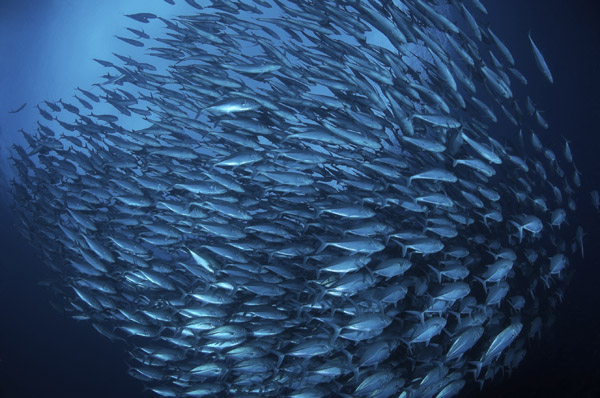


The electrons form Cooper pairs and these pairs then merge to form a quantum collective wave, or condensate. This does not mean that all electrons regroup at the same spot, but rather that all electron pairs adopt the same phase like a unique wave, and the same energy.
 In order to understand this idea better, we can use different analogies, even though each one has its limits. For instance, you could compare an electron with a fish in the sea. The condensate would be thousands of fish forming a school, with a powerful and harmonious collective movement. You could also compare an electron to a dancer in a club. The condensate would be a thousand dancers in a Viennese ball, or in a flash mob, forming together a synchronized human wave.
In order to understand this idea better, we can use different analogies, even though each one has its limits. For instance, you could compare an electron with a fish in the sea. The condensate would be thousands of fish forming a school, with a powerful and harmonious collective movement. You could also compare an electron to a dancer in a club. The condensate would be a thousand dancers in a Viennese ball, or in a flash mob, forming together a synchronized human wave.
The idea of a large number of quantum particles – electron pairs in this case - forming a collective state was developed by Bose and Einstein in the case of a very dilute atomic gas. It was also used to understand the superfluid properties of helium.
One of the most important properties of this collective wave, called the condensate, is the “gap”. Bardeen, Cooper and Schrieffer proved that this wave cannot be easily broken. You have to provide a minimum energy to break one of the electron pairs, because that pair is linked to the other ones in the condensate. This minimum energy is called “gap”. This is not the case in a metal, where a small electric tension is enough to pull an electron out of the metal, thanks to the tunnel effect. However, in a superconductor, a minimum electric tension must be provided.
This property was measured using many techniques, especially the tunnel effect by Giaver. The value of this “gap” is generally higher in superconductors at a higher temperature. In some cases, this “gap” can even be anisotropic, which means it is different in different directions. This is the case for non-conventional superconductors such as cuprates.
